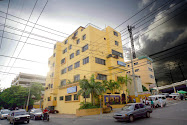Whether you are a donor, a patient, or a volunteer you should know we believe that if you can't do something right than you shouldn't do it at all - especially in Haiti. Whether it is construction, or orthopaedics, we need to make sure our work is "quake proof". Buildings shake; patients often lack follow up, good communication, and many times progress with reckless abandon. Haiti has enough problems without leaving our work subject to future demise, creating even more problems.
This is why CURE International has collaborated with Hopital Adventiste d'Haiti to focus on creating a premier reconstructive surgery center. Inspired by the aftermath of the January 12 earthquake and motivated by ongoing needs, we have developed a referral center for orthopaedic and plastic reconstructive surgery. Calls come in everyday for new cases that need a higher level of care - this week we were referred cases of bone deficits, osteomyelitis, pediatric ortho trauma, post op infections, a pelvis fracture and most recently 3 hip fractures. Most are not easy cases and as time goes on since that Jan 12 afternoon the chronic infections, open wounds, and nonunions are becoming increasingly difficult to treat.
Today was hip fracture day. 3 patients were referred to us from MSF Holland (Doctors Without Borders Hospital).

Patients wait in the pre-op room and get EKG's, chest x-rays, and labs. One had been laying in another facility more than 2 months waiting for this operation - not knowing we were able to perform these operations.

Dr. Don Williamson, CURE volunteer performs anesthesia with Dr. Emilian a Haitian anesthesiologist and his daughter Kelly CNA.

In this case a hemiarthroplasty (replacement of the femoral head) is performed for a chronic displaced femoral neck fracture.

Our second case was a 33 year old man involved in a car accident 1 month ago. We chose to save his native femoral head, reduce the fracture anatomically and reposition the fracture into a better position for healing by performing an osteotomy. We were grateful for the donation of our OEC 9600 c-arm from the Haiti Bones donors which has enabled the performance of these demanding cases.

Frantz takes a post operative x-ray of our last patient of the day. This portable digital x-ray machine donated by Americares enables instant imaging without having to pay for expensive x-ray film.

This is another one of the many hemiarthroplasties performed here since the earthquake. We owe much gratitude to Roger Williams from Temecula, CA for his donation of these implants and Robbie Jackson at CURE DR who spent several days getting them out of customs. These patients will all be up and walking tomorrow with our volunteer therapists from Ukiah Valley Medical Center.
































